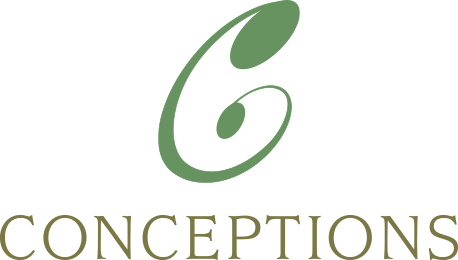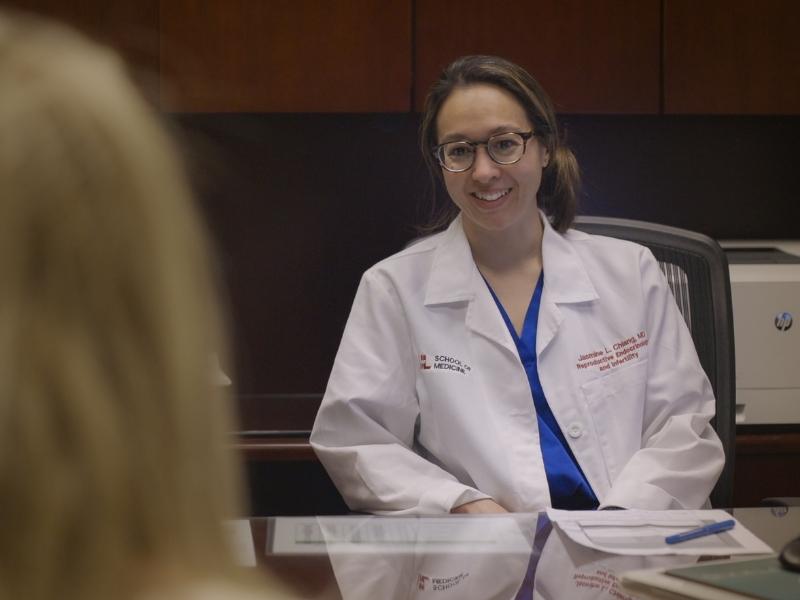There are many acronyms that are associated with infertility treatment from IUI, IVF, PGT, and of course, WTF. We understand. Diminished ovarian reserve or DOR is one acronym that is used often but not often explained well for patients. We sat down with Dr. Jasmine Chiang from Conceptions Reproductive Associates of Colorado to learn more about DOR and her contribution to a new book focused on DOR titled “The Inconceivable Journey: From Struggle to Resilience” by author and patient Michelle Kostic, LPCC.
What is diminished ovarian reserve or DOR?
Diminished ovarian reserve is about the number of eggs you have in your ovaries and is related to your age. It means you have a lower-than-average egg quantity than other patients within your age group. As women get older starting at puberty, the number of eggs or oocytes we have declines over time. For some patients, their ovarian reserve falls above or below the average based on age. DOR patients fall below the average.
Are there genetic markers for DOR?
There are a lot of associations but no direct link yet between genetics and DOR. Only in extreme cases which really fall into the primary ovarian insufficiency category. In those cases, mutations like Fragile X or Turner’s syndrome are directly linked to diminished ovarian reserve.
If someone is having irregular menstrual cycles, is that an indicator of DOR?
Maybe. Sometimes DOR patients are prone to more ovulatory dysfunction. Not true for everyone. Needs to be investigated.
Can patients with DOR still get pregnant?
Absolutely but it requires more “detective work” to find the clues as to why they are having trouble getting pregnant. While DOR is about the number of eggs, the quality of your eggs is also important. Indicators like anti-mullerian hormone (AMH) levels give us insight into the quality which is just as important to success.
It sounds like having a great IVF lab is critical to overcoming the egg quantity and quality challenges, correct?
Completely. At the end of the day, IVF is a numbers game; if we retrieve 12 eggs, 10 may fertilize, and 7 become viable embryos for transfer. You need a great embryology team and facility to optimize the DOR patient experience where we might retrieve only a few eggs.
Can your level of DOR be influenced by stress as well as age?
It’s interesting, stress is hard to measure but easy to see. There have been studies that show stress hormones like cortisol may be an unwanted influencer on fertility. The whole infertility experience is stressful, we understand. And while there may not be a direct clinical link yet, we know that the stress – especially in DOR patients may cause them to drop out of our care, when clinically speaking they have a reasonable chance of success.
At Conceptions, we offer a number of emotional health services for patients that can help lower their stress levels and better navigate the many emotions they are feeling.
You recently provided the forward to a new book about DOR, tell us about it.
I had the pleasure to treat author Michelle Kostic, LPCC who we diagnosed with DOR, and shared her story in a new book titled, “The Inconceivable Journey: From Struggle to Resilience.” I’ve been involved in writing a number of research publications over the years, this was my first time writing for a book. It was a great experience and I was flattered that she asked.
As I say in my foreword to the book, reading her experience has been eye-opening for me and gave me another point of view about what patients, with DOR or not, are going through. Michelle shares her story in a very honest and transparent way which her readers will appreciate. It’s very informative too. As a mental health professional, she writes in a way that is very educational but still conversational.
Michelle, like all my patients, truly inspires me to be at my best every day for them clinically and emotionally.
Are any more books in the works for you?
(Laughs) No, I’m just here taking care of my patients. My patients are my “words” and I try to make my “writing” as inspirational as possible every day.


